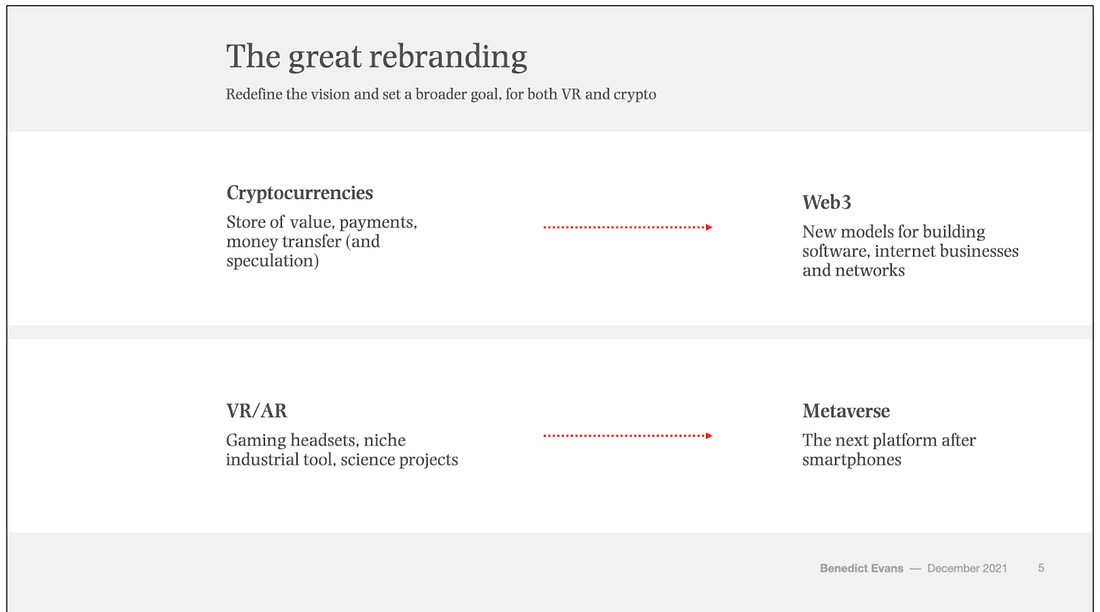
What a crazy two months it’s been since my previous Web3 post. After two years of closed borders, I finally travelled to Bulgaria.
One of the many lessons I learned during the holiday is that we travel to appreciate what we have. In just 30 days, I experienced a lot of history, culture, and sightseeing while connecting with family and friends.
I am back in Singapore to continue my entrepreneurial journey with a strong sense of appreciation. Southeast Asia might have taken away some comfort but has paid dividends in growth.
Let’s kick off the year with some thoughts on what’s happening in crypto and Web3 in 2022.
My time in Europe allowed me to talk to many people across Bulgaria about crypto. While most people seem interested, a few have a basic understanding of Web3 or how crypto works. All in all, I met just a couple of experts.
The more people I talked to, I realised how early we were. Add a lot of reading on the topic, and you can guess that my perspective started evolving. While I am still convinced that Web3 will be the next major shift in tech, I also came to appreciate the current state of things.
Complimentary opposites
Most Web3 proponents tend to demonstrate strong dualities. To name a few, decentralisation is good, centralisation is bad. Bitcoin is good; fiat is doomed.
Also Read: Demystifying NFTs and DeFi
Such dualities paint concepts as good or evil. That line of thinking never resonated with me. Instead, I started to think about such concepts as complementary opposites.
Having the ability to appreciate two ideas that seem opposite brings a lot of humility. That’s especially true when thinking of Web2 and Web3. Lack of certainty makes us more humble. Avoiding dualities gives a better perspective about everything in between.
Think about it. Realistically, no one knows the future. So we cannot be sure about the effect of our actions. Significantly how whole industries will evolve, i.e. Web3 taking over Web2.
“People forget just how completely non-obvious the entire digital revolution was every step of the way.
1995: WWW will fail
2002: Google will fail
2007: iPhone will fail
2013: Facebook will fail”
– Balaji Srinivasan
Whatever happens, there will always be tradeoffs. Humility allows us to keep an acute awareness. Which in turn enables us to navigate an ever-complex world. We need to embrace complementary opposites to nurture humility and thus become antifragile.
Also Read: HK accelerator Brinc lands US$130M funding led by Animoca Brands to foray into Web3
Any person who ever tried to change the world learned to navigate complexity. Even some of the most successful people of our times, like Steve Jobs and Elon Musk, learned that you cannot impose your own will on the world at all times.
Determination does not equal foresight. Change is inevitable. But changing the status quo requires an understanding of the complementary opposites.
The great rebranding
All those reflections led me to think, where exactly is the Web3 ecosystem today?
We certainly see a lot of activity in the space. Especially across social media, funding, new startups, developer activity, and the price of major coins like BTC/ETH.
Additionally, in the last few years, crypto has gone through a significant rebrand. Moving from crypto to web3 enabled us to leave behind bad experiences like the ICO boom in 2017 and market crashes.

The rebrand seems to be working. The brightest minds are pivoting careers and joining the decentralised movement. Although crypto has been around for more than a decade, we are still in the early days.
Web3 today is in a period of exploration and sophistication.
Exploration
Under exploration, I refer to working towards identifying and building use cases. Projects that leverage blockchain while delivering consistent value. Unfortunately, while DeFi, NFTs, and DAOs have emerged as innovation streams, many remain sceptical. As with every innovation in its early days, we are experiencing a phase of skeuomorphism.
Also Read: To infinity and beyond: Why 2022 will be the year of Web3
“Skeuomorphism is a term most often used in graphical user interface design to describe interface objects that mimic their real-world counterparts in how they appear and/or how the user can interact with them. A well-known example is the recycle bin icon used for discarding files. Skeuomorphism makes interface objects familiar to users by using concepts they recognise.” – Interaction Design Foundation on Skeuomorphism.
During this phase, founders and designers are essentially adapting existing use cases. Think of Letter writing > Emails and Books/Magazines > Read-only blogs during web1. It took a long time to get native Web2 applications. Tools that enabled read and write functionality.
Only then did we see an explosion of success cases. I am referring to social media (Facebook), productivity (Notion), and crowdfunding (AngelList).
One of the famous examples of skeuomorphism in crypto is Bitclout. The platform resembles a decentralised Twitter. Yet, the difference is that everyone gets a token.
You can support your favourite influencer by buying her token. Of course, the price goes up as more people buy.
On the one hand, that’s a unique use case. A solution that directly rewards influencers without the intervention of third parties. On the other, it looks and feels exactly such as Twitter. Perhaps that’s why it did not get popular outside crypto circles.
I do not have anything against such platforms. On the contrary, I think they play an essential role. But the real value will be unlocked by Web3 native use cases, not adaptations of Web2 platforms.
Think of PoolTogether. That’s a native use case. Once you log in with your wallet, you can deposit money for a chance to win.
Each week the smart contract picks one winner. Even if that’s not you, you end up keeping all of your money. A lottery where you can either win or save your money.
Sophistication
The second biggest challenge with Web3 today is the poor UI/UX. Most projects tend to be highly technical. Hence, difficult to understand and act on. In my opinion, that holds back a lot of people from embracing Web3 and experimenting in space.
The challenge stems from how blockchain-enabled apps present an entirely new functionality. Use cases that were unseen in Web2.
During the past 10+ years, we got good at designing applications for third-party organisations. Think of apps that help us to manage our finance (banks), identity (governments and social media), transportation (Uber), and accommodation (Airbnb).
Suddenly, we have a new paradigm shift. With Web3, we manage our wealth without the need for a third party to interfere. In turn, designers struggle to address that complexity. After all, we cannot copy-paste proven best practices from successful organisations.
Also Read: The transition is now: these Web3 apps are transforming global finance
The same pattern played in both Web1 and Web2. The first web pages were ugly and hard to use. Likewise, the first versions of Uber/Airbnb/Instagram/Facebook were not great. It takes time to iron out the complexity and develop great UI/UX.
Having said that, we are seeing significant progress. If you compare any dAPPS from a few years back and now, you would see considerable improvement.

Source: Bitcoin History
Meaning, Web3 is going through a period of increasing exploration and sophistication. Extreme ideologists speaking of decentralisation at all costs start meeting gravity. The promise of blockchain is appealing. But it will take time before we build dAPPS ordinary people can understand and use.
–
Editor’s note: e27 aims to foster thought leadership by publishing views from the community. Share your opinion by submitting an article, video, podcast, or infographic.
Join our e27 Telegram group, FB community, or like the e27 Facebook page
Image credit: dmitrydemidovich
The post The great rebranding of crypto to Web3 appeared first on e27.

